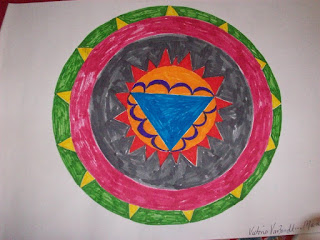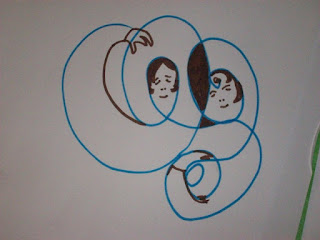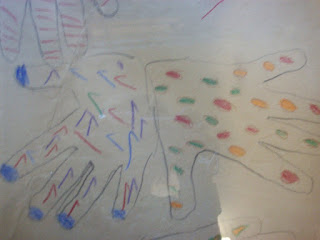Saturday, June 20, 2009
Creating Mandalas for Healing...
The word Mandala, comes from the Sanskrit language meaning “sacred circle.” The use of mandalas throughout time have been used by various cultures for meditation, self-reflection, healing and as a symbol for the self.
In this weekly group, we will create mandalas from various art mediums including oil and chalk pastels, markers, colored pencils and collage. The workshop is meant to provide a relaxing and reflective experience that supports and promotes healing.
No art experience necessary.
Group begins, Thursday, July 7th, 2009
6pm-8pm
WEST LOS ANGELES LOCATION
$20 Per session
SUPPLIES PROVIDED
Facilitated by Victoria Van Zandt, MA
Registered Art & Marriage & Family Therapist
Intern #52087
No art experience required.
Please call for more information and/or to participate in the group.
Call 310-922-3957
Supervised by Gwen Lotery, MFT #37140
Monday, June 15, 2009
Mandalas For Reflection, Meditation & Healing

Thursday, June 4, 2009
Doodling Our Stress Away
 The Oxford Pocket Dictionary defines doodling as scribble or draw, esp. absentmindedly. I especially like the use of the word, absentmindedly, because if we are doing something absentmindedly or without the mind, there is a tendency to be more at ease. So, it would make sense that if the mind or for that matter, the thinking brain, is at rest and not obsessing, one could experience calm. I have not done research on the relationship between doodling and relaxation, but I tend to believe that while we doodle, our brains are resting, compared to when we are sitting around waiting nervously for a physical exam or academic test to begin.
The Oxford Pocket Dictionary defines doodling as scribble or draw, esp. absentmindedly. I especially like the use of the word, absentmindedly, because if we are doing something absentmindedly or without the mind, there is a tendency to be more at ease. So, it would make sense that if the mind or for that matter, the thinking brain, is at rest and not obsessing, one could experience calm. I have not done research on the relationship between doodling and relaxation, but I tend to believe that while we doodle, our brains are resting, compared to when we are sitting around waiting nervously for a physical exam or academic test to begin.There are a few ways to approach doodling. For instance, you can put pen, pencil or marker to paper and let them lead the way as if they have command of the page and see what happens. You can continue that process and after you have completed your doodle, look for an images that surface and color them in. That is what I did with the piece attached to this blog above. You can use color or black and white. I happen to enjoy doing this type of doodling. You can doodle with an image already in mind, but then I'm not sure it is really doodling, but none-the-less, your mind is elsewhere then on pressing issues. Doodling can be done on paper napkins, the little cardboard coffee holders, newspaper, Styrofoam cups and/or anywhere that is free for the taking. I love the fact that you really can get lost in the process of doodling and free one's mind for a few moments. I have made doodles that I've turned into larger pieces by taking the original doodle and having it enlarged at a printing store. It is endless what you can do with doodling. Next time you are feeling anxious instead of reaching for the Valium, try reaching for a pad and pencil. It might just do the trick!
Peace in Art-Making
Tuesday, June 2, 2009
Art Speaks Louder Than Words
Thursday, May 28, 2009
Why Art Therapy?
Feel free to contact me for more information on art therapy and how and where it is used and its benefits.
Peace
Thursday, May 21, 2009
In Sickness & In Health - allow Art to Lead The Way
 My hand drawing from first grade...who knew?
My hand drawing from first grade...who knew?Peace
Monday, May 18, 2009
COLLAGING
I'm a big supporter of the art-making process of collage. The Oxford Pocket Dictionary defines "collage" as work of art in which various materials are arranged and glued to a backing. I would like to add, that found objects such as shells, , fabrics, photographs, tree bark, string, yarn and different textured papers can be included in a collage. You can mix mediums and use them to draw or paint onto the collage, for instance including paint, colored pencils and markers. I use collage with clients because it takes the pressure of having to draw or paint away from the art-making process. What else I enjoy about working with collage is that whatever issue a person is working on or trying to understand in their life, collage offers a nonintimidating method to explore thoughts and feelings. Magazine cut-outs provide a variety of images that can be used to represent thoughts and feelings. For instance, lets say an individual wanted a deeper understanding of his or her relationship with their sister. I might suggest that they choose images that reflect what he or she likes about their sister and images that represent what they do not like. I usually recommend that they choose between 8 and 10 images so that they are not using the entire session to go through the many picture cut-outs. Once the pictures are glued down, I will ask clients to talk about the process and share any thoughts or feelings they have about the images they chose. Together we explore the art.
Try it for yourself:
Exercise: Introduce yourself with images. Instead of introducing yourself with words, you will do it with images.
Begin collecting magazine picture cut-outs such as people, animals, places, buildings, plants, sayings, words, things, etc. Keep them in a box.
You'll need: glue, scissors, large plain paper or cardboard.
This can be a work in process. Start by choosing images that you feel define who you are, where you are in your life and other aspects of yourself you would like to share.
Glue images to the paper/board in away you wish. Overlapping if you choose.
Continue until you feel your collage is complete. Reflect on the process and if you wish, you may write a short story or poem about the collage/process.
Title your collage.


